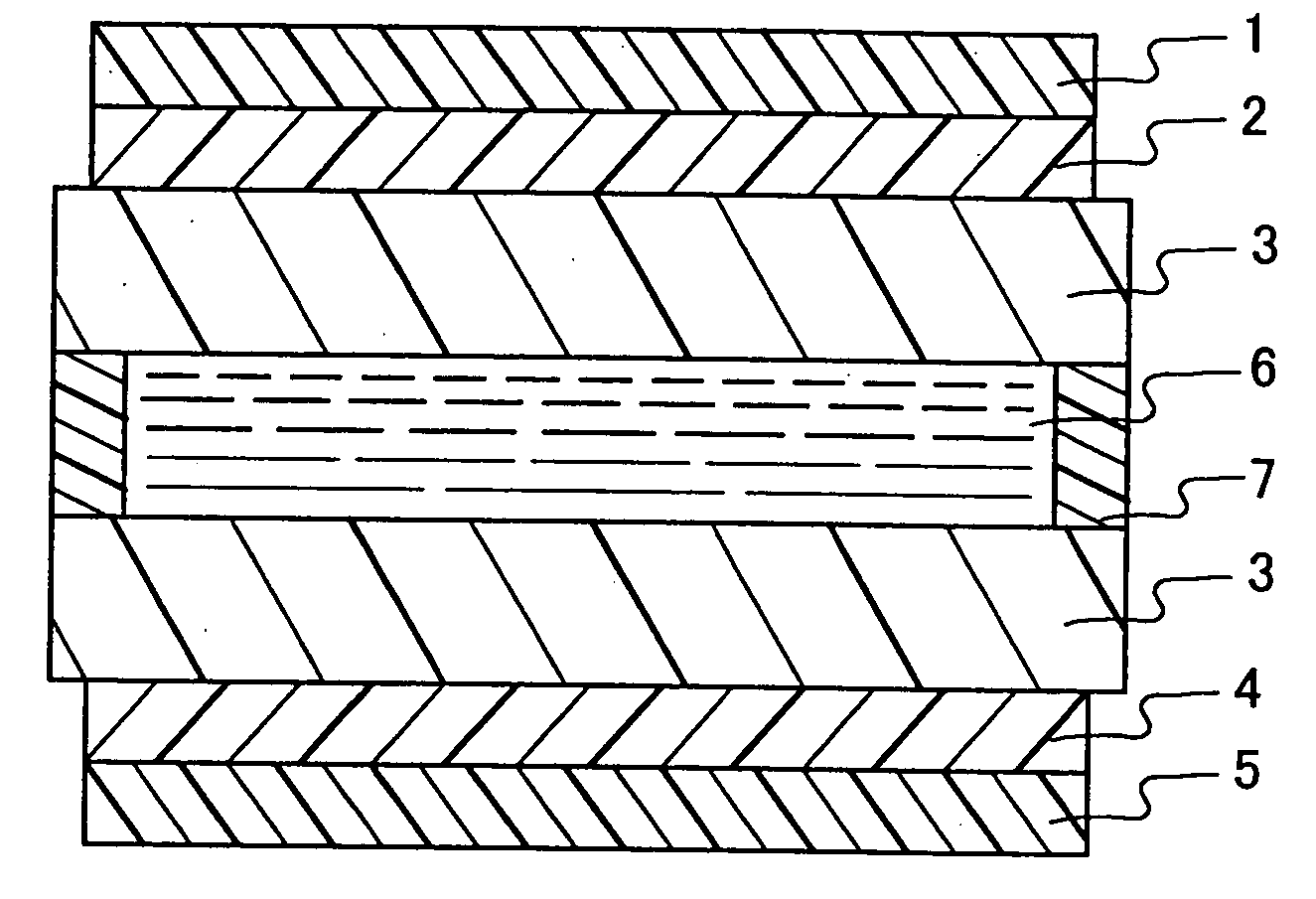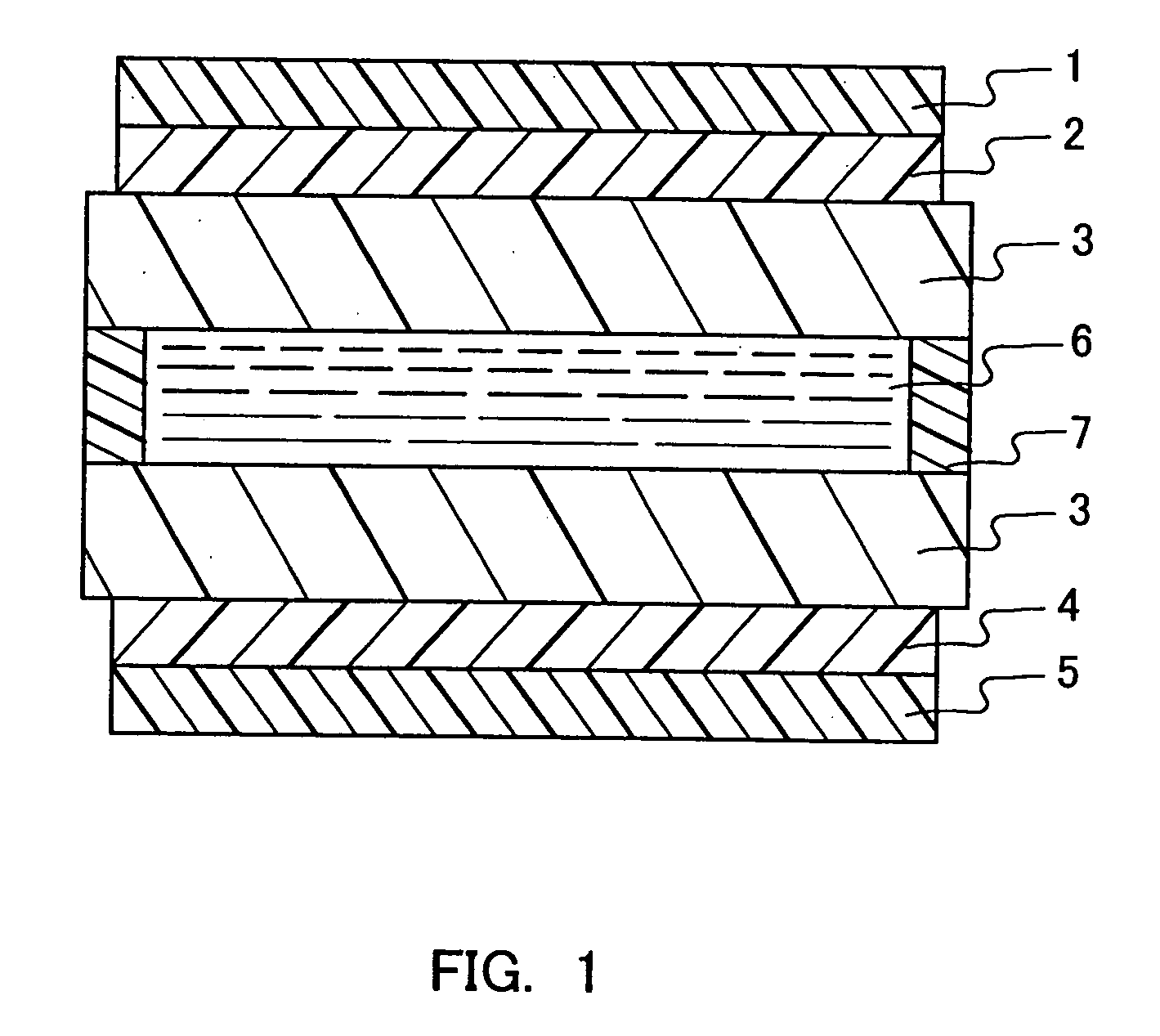Polarizer, polarizing plate, and liquid crystal display using the same
a technology of liquid crystal display and polarizing plate, which is applied in the direction of polarizing elements, thin material processing, instruments, etc., can solve the problems of irregular color or decoloration of the panel, and achieve the effect of reducing decoloration, preventing color change of the panel, and less dimensional chang
- Summary
- Abstract
- Description
- Claims
- Application Information
AI Technical Summary
Benefits of technology
Problems solved by technology
Method used
Image
Examples
example 1
[0063] A PVA powder having an average polymerization degree of 1700 and an average saponification degree of 97.0 mol % was dissolved in pure water and adjusted to prepare an aqueous solution of 10 wt %. The solution was applied on a polyester film and dried at 50° C. for two hours, and dried further at 130° C. for 30 minutes in order to provide a PVA film 40 μm in thickness. The film was swelled for one minute in 30° C. water, and then dripped in a 30° C. aqueous solution containing potassium iodide and iodine, and doubled in length along a predetermined axis by stretching. The ratio of the potassium iodide to the iodine in the aqueous solution was 10:1 by weight. Next, the film was further stretched in an aqueous solution comprising 4 wt % of boric acid at 50*C to have a final stretching ratio triple that of the original, and further dipped in 30° C. water to wash, dried at 50° C. for four minutes, so that a polarizer 13 μm in thickness was obtained. The concentration of iodine in ...
example 2
[0064] A PVA powder having an average polymerization degree of 1700 and an average saponification degree of 97.0 mol % was dissolved in pure water and adjusted to prepare an aqueous solution of 10 wt %. The solution was applied on a polyester film and dried at 50° C. for two hours, and dried further at 130° C. for 30 minutes in order to provide a PVA film 65 μm in thickness. The film was swelled for one minute in 30° C. water, and dipped in a 30° C. aqueous solution containing potassium iodide and iodine, and doubled in length along a predetermined axis by stretching. Ratio of the potassium iodide to the iodine in the aqueous solution was 10:1 by weight. Next, the film was stretched in an aqueous solution comprising 4 wt % of boric acid at 50° C. to have a final total stretching ratio triple that of the original, and further dipped in 30° C. water to wash, dried at 50° C. for four minutes, so that a polarizer 18 μm in thickness was obtained. The concentration of iodine in the above-...
example 3
[0065] A PVA film 40 μm in thickness obtained in Example 1 was swelled for one minute in 30° C. water, and dipped in a 30° C. aqueous solution of potassium iodide and iodine to be tripled in length along a predetermined axis by stretching. Ratio of the potassium iodide to the iodine in the aqueous solution was 10:1 by weight. Next, the film was further stretched in an aqueous solution comprising 4 wt % of boric acid at 50° C. to have a final total stretching ratio 5.5 times that of the original, and further dipped in 30° C. water to wash, dried at 50° C. for four minutes, so that a polarizer 9 μm in thickness was obtained. The concentration of iodine in the above-identified aqueous solution was 0.37 wt % so that the polarizer had a transmittance of 44%.
PUM
 Login to View More
Login to View More Abstract
Description
Claims
Application Information
 Login to View More
Login to View More - R&D
- Intellectual Property
- Life Sciences
- Materials
- Tech Scout
- Unparalleled Data Quality
- Higher Quality Content
- 60% Fewer Hallucinations
Browse by: Latest US Patents, China's latest patents, Technical Efficacy Thesaurus, Application Domain, Technology Topic, Popular Technical Reports.
© 2025 PatSnap. All rights reserved.Legal|Privacy policy|Modern Slavery Act Transparency Statement|Sitemap|About US| Contact US: help@patsnap.com


